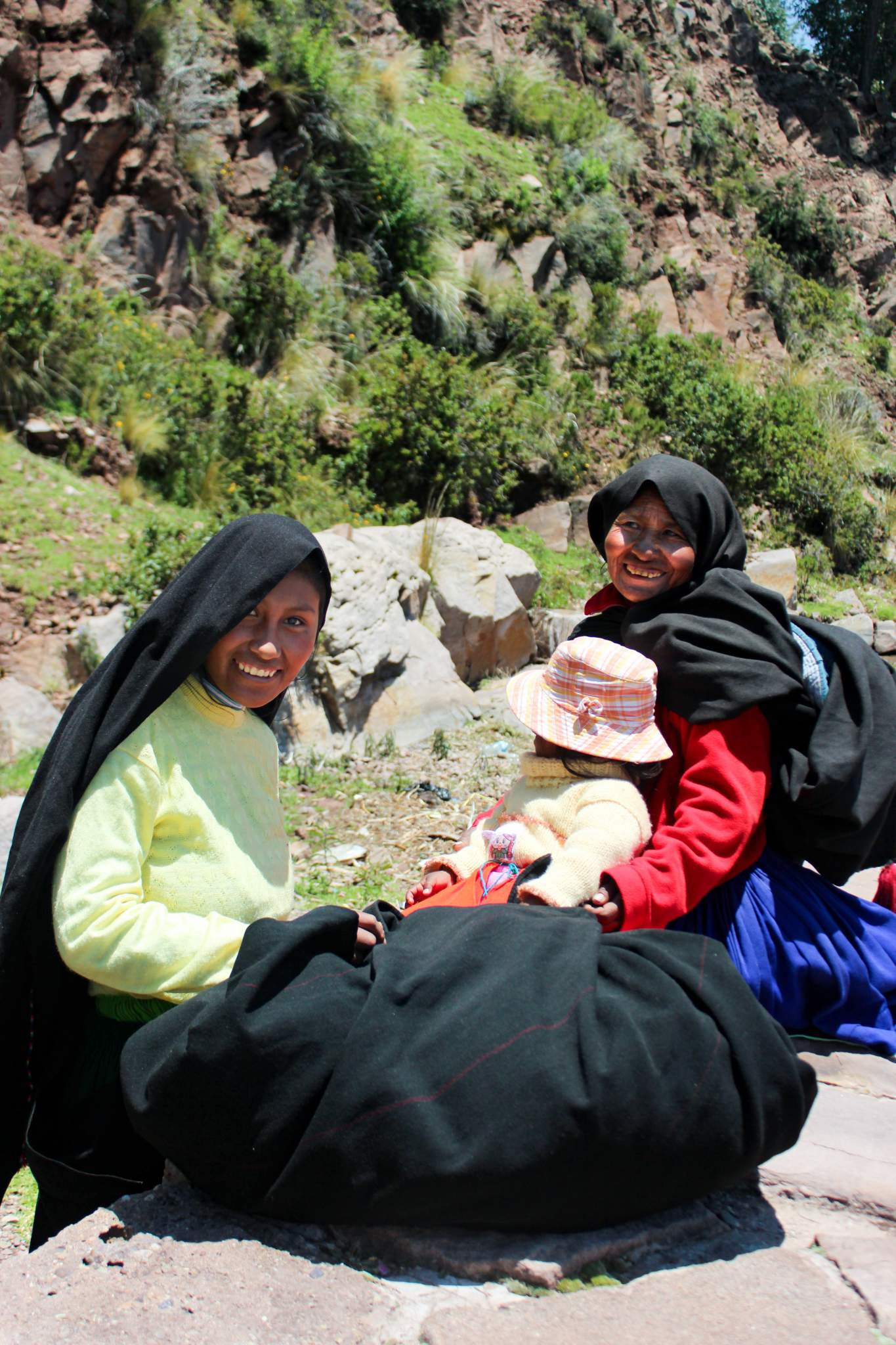
Lake Titicaca :Taquile legends,Andean Weavers and Wedding Rituals
Taquile island – the home of world famous Andean Weavers . Roughly half the size of Lake Ontario , almost 1,000 feet deep in parts , Lake Titicaca is the highest body of water of its size in the world.
Taquile island: home of the Andean Weavers and a perfect day trip from Puno
With the age of more than sixty million years, Lake Titicaca is a stunning natural wonder that was formed during the pre-ice period. It is considered one of the most beautiful lakes in the world located on the border between Bolivia and Peru. With a height of about 12,500 feet above the sea level, the lake is known among the highest navigable lakes in the world. This deep blue lake looks out of this world no matter what time of the days it is.
How did Lake Titicaca it get so high in the mountains ?
When the god Viracocha began killing off the local people for being hedonistic , Inti , the sun god sent pumas to save them . But the pumas ate people instead . Inti regretted what he has done , cried for days until his tears filled the valley . Basically the lake is made if Inti’s tears .
Lake Titikaka:The Legend
Lake Titicaca has a sacred place in Peruvian legend. According to the 16th‐century chronicler of the Incas, Garcilaso de la Vega, the Incas believed that the Sun God created Manco Capac, the first Inca King , on the Island of the Sun in Lake Titicaca. From Titicaca, these two traveled forth and settled in the Cuzco Valley. There they established the line of Inca Kings and Inca civilization that flourished for at least five centuries , until the arrival of Francisco Pizarro in 1530.
How to visit Andean Weavers in Taquile Island
Exploring lake Titicaca at 12,500 feet
This is not your typical “lake weekend” and lake Titicaca does not even to resemble a lake , but a limitless ocean .
The sun painted the lake the illumines blue . The sky the sky is azure beyond believe .
Being in the middle of this majestic lake , you can totally understand why the Incas worshipped the sun : the sun is what gives Lake Titicaca its sense of mystery, its unmatched sublimity.
Altitude sickness can be a problem in the Altiplano, over 12,000 feet above sea level. The first few days in the highlands, get plenty of rest, drink lots of fluids and avoid alcoholic beverages. Puno is higher in elevation that Cusco if this is where you are arriving from . Ask your doctor about prescription medicine that combats the effects of altitude sickness.
The clouds looked bigger and even more prominent than the lake – that seemed to literally be touching the water and the distant shorelines – the impossibly white fluffy coups . The sun paints the lake the illumines blue.
Being in the middle of this majestic lake , you can totally understand why the Incas worshipped the sun : the sun is what gives Lake Titicaca its sense of mystery, its heart-tugging sublimity.
Even though the Uros islands are the second most popular attraction Peru (after Machu Picchu , of course), the lake has a smattering of naturally formed islands with unique traditions . And to be honest , I was much more impressed with those than with the photo-ready Uros island that gave me the feel of being at the Universal studio .
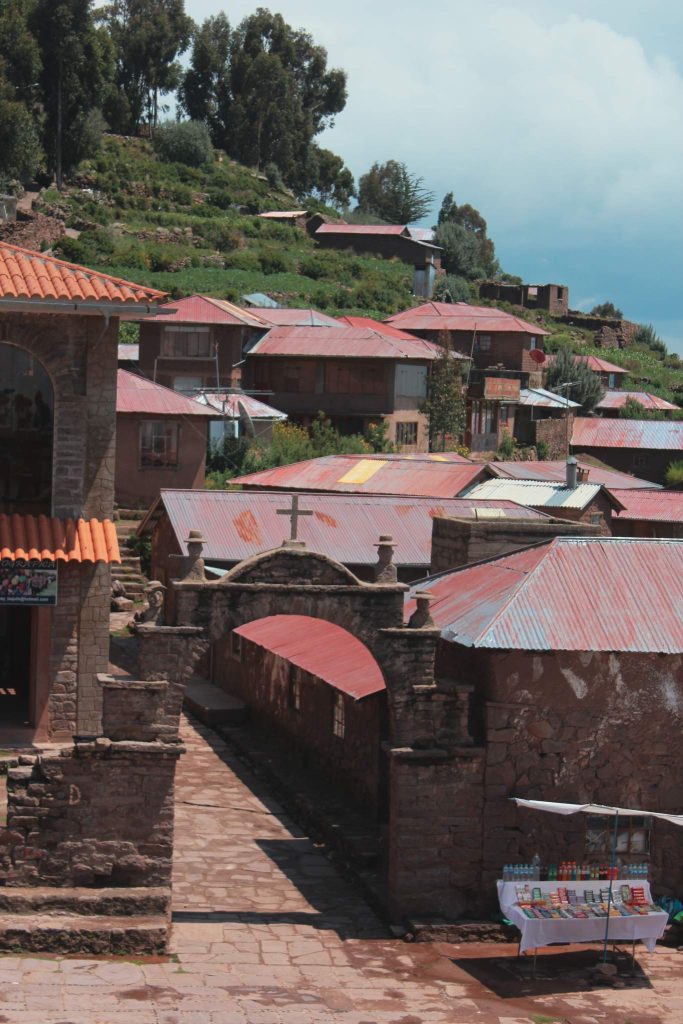
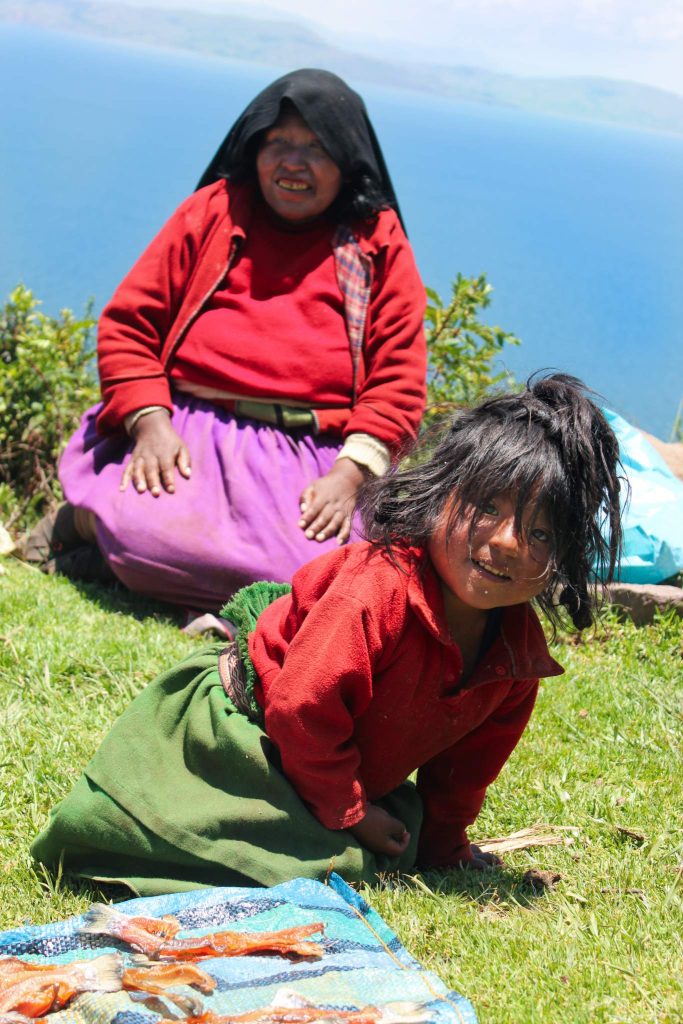
Taquile, it is carless and tranquil.
The empire seized Taquile island in the 15th century, and inhabitants still speak its tongue, Quechua, in addition to Spanish that the younger generation learns at school.though women still are more likely to be monolingual
You can get a great sense of the local culture at this hilly island of about 2,000 Quechua-speaking natives. The local community depends heavily on tourism
Their life consists of farming , cooking and weaving intricate patterns thousands of years old . This is the home of one of a kind , Andean weavers designated by UNESCO as a Masterpiece of the Oral and Intangible Heritage of Humanity . Today their exquisite textiles are primary source of tourism-related income.
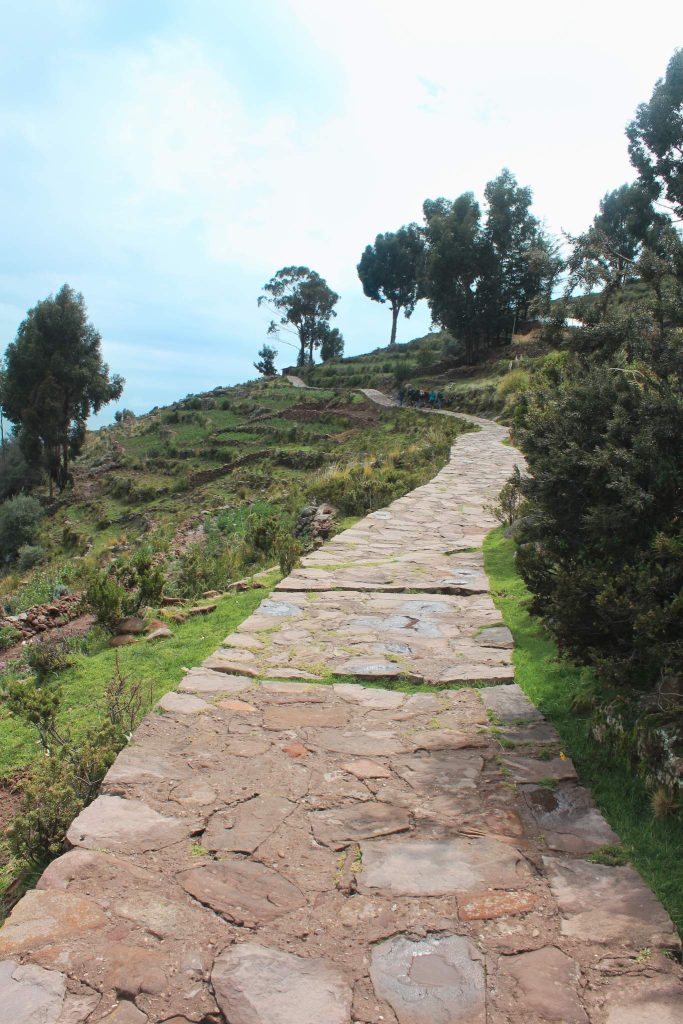
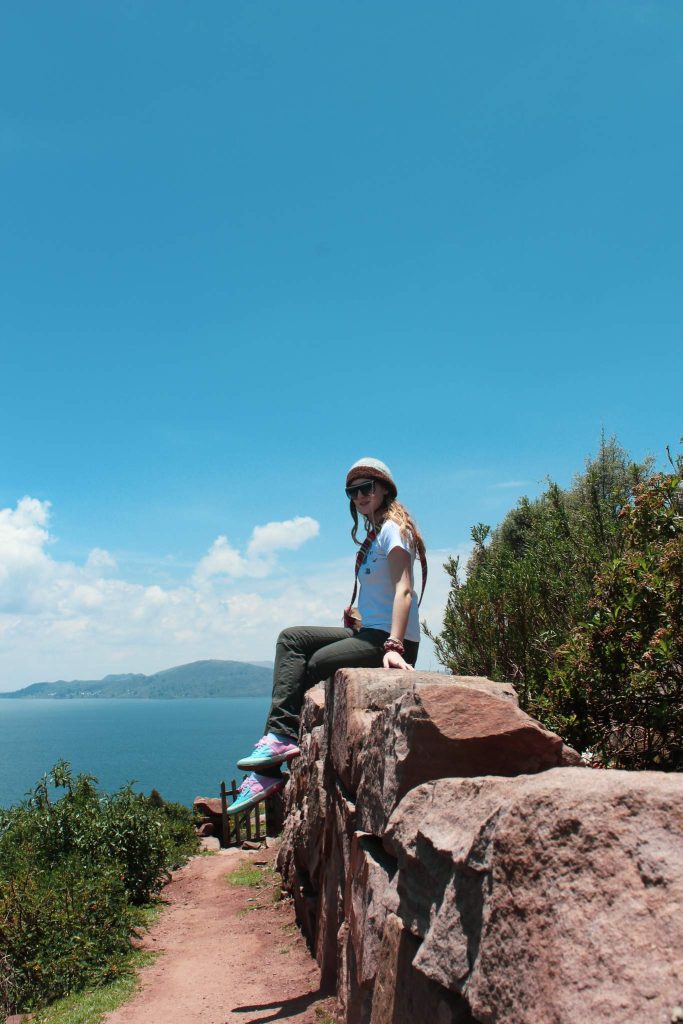
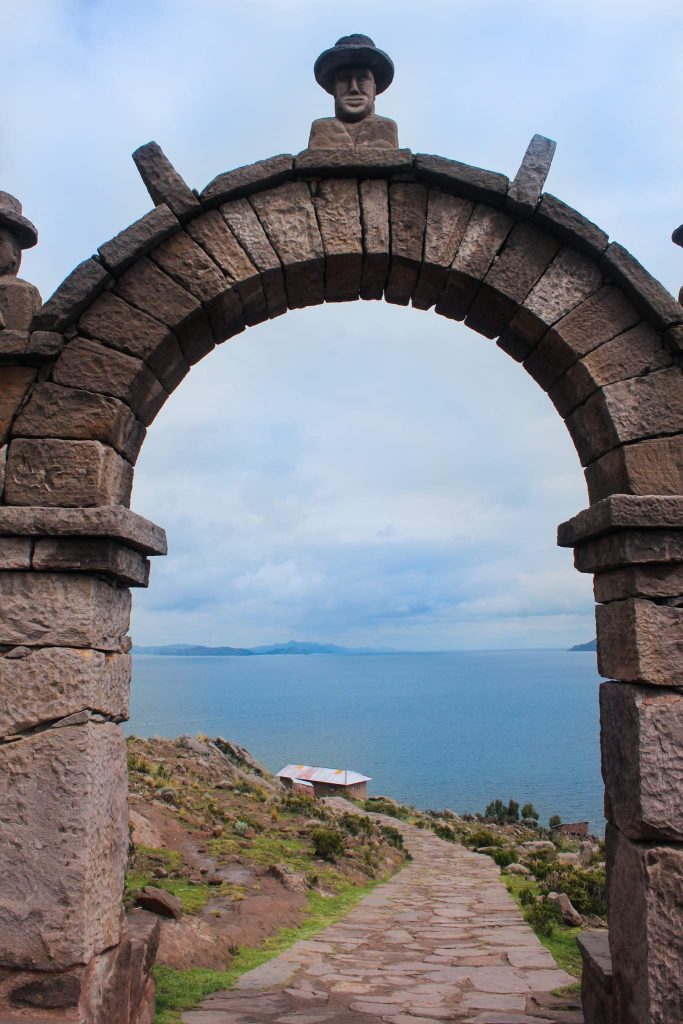
Running water and electricity are exotic, the only transportation is by foot, and tranquillity abounds.stunning vistas is everywhere .
We are passing by the locals on your hike through the island , all with thick cuds of coca leaves poking from their cheeks and many knitting hats while they walked .
Teenagers , males and females . I bet they can do it with their eyes closed . Yes , and one of the coolest thing about this waving school : both genders do the weaving .
Andean Weavers : Who are they?
The knitted chullo secrets.
This is the most important garment a Taquile man can wear. It has so many meanings and expressions. The primary function of a chullo is to indicate whether a man is married (a red/pink hat) or single (red and white hat). But this hat shows so much more than that: the weavers put their dreams in the form of the tiniest decorations on their hat. And even the way the hat is worn, is a form of communication without words: if the top end is placed to the right, this means “I’m having a great day”, and if the top end is placed to the right it means “Don’t mess with me”.
How do local men pursue a woman they are truly interested in?The Taquilenean is weaving.
The man has to show the woman he is worthy of her attention, and unlike any other cultures, for Taquile men, being the worthy one, means he can knit.
The man has to drink water out of his hat in front of his father-in-law. He is only a worthy candidate if no water drips from his hat, meaning he is a good weaver. If the water leaks from the hat, they start over.
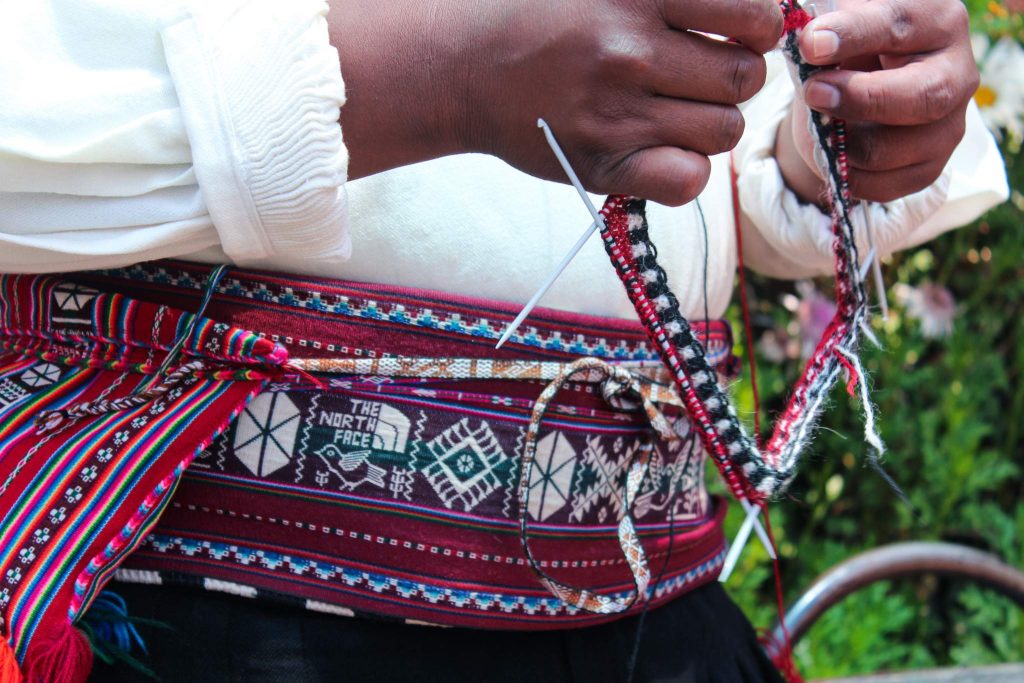
Being good at weaving is very important to the islanders. Boys start weaving at 8 years of age and spend several hours a day weaving for the rest of their lives.
When a woman gets married, she also has to show she is a good match by showing her weaving abilities. Women weave a belt, which is technically the wedding band, and this is the belt that you see men on the island wear. This first part of the nestle is woven from her hair, and it goes underneath the belt to provide warmth. The second part is woven from the wool of alpacas. It is the colorful part that is very symbolic. The woman basically puts all of her wishes out there, for fertile lands and a big, happy family. There are always 12 images on the engagement waistbands.
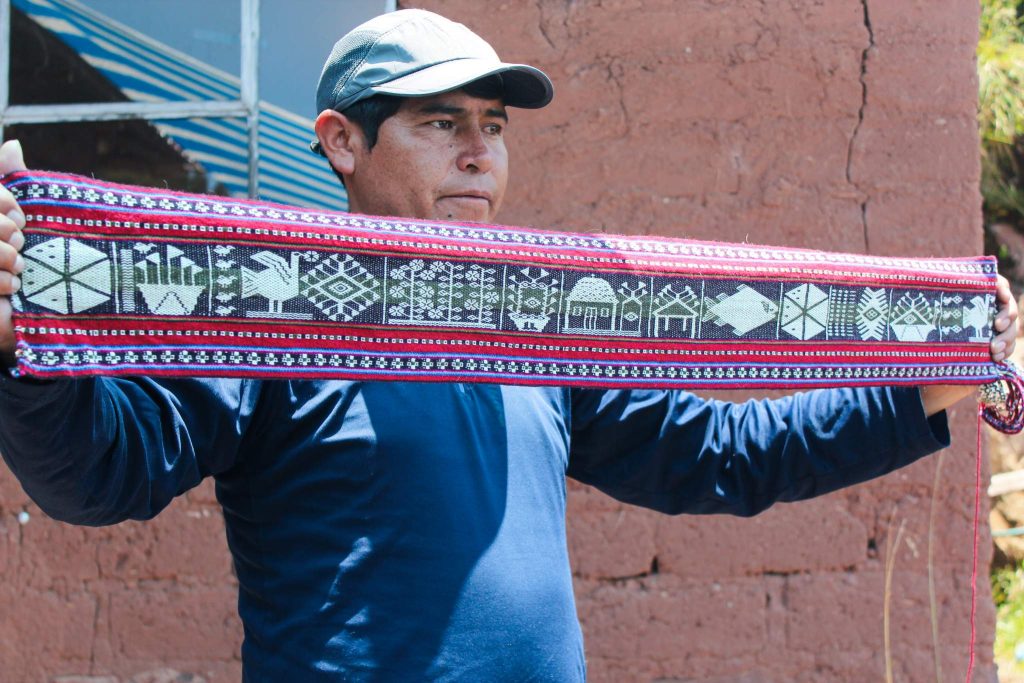
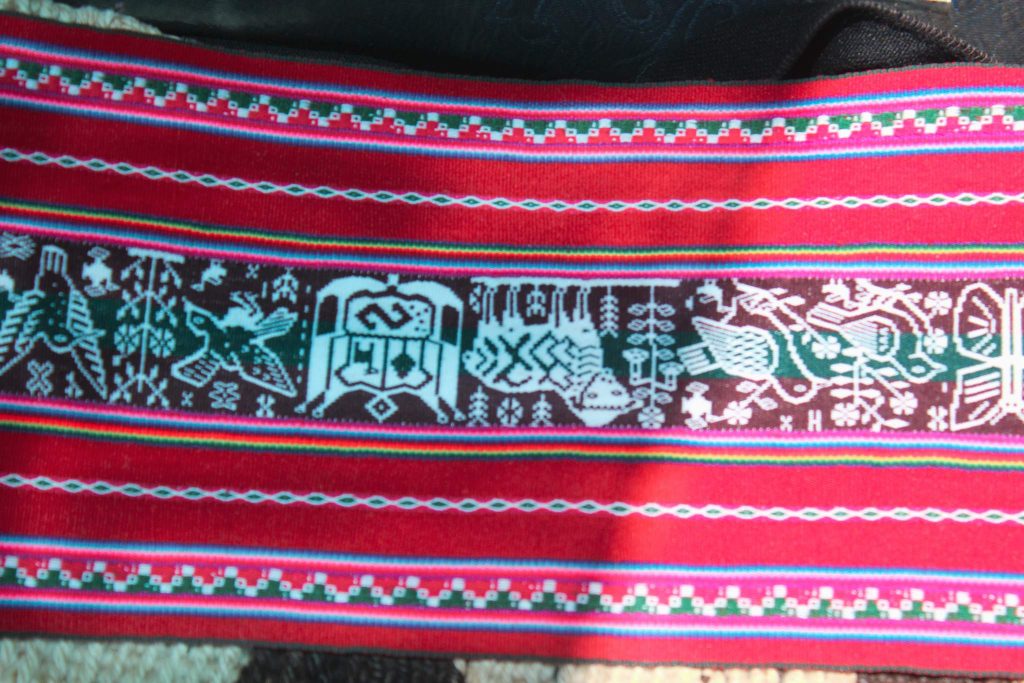
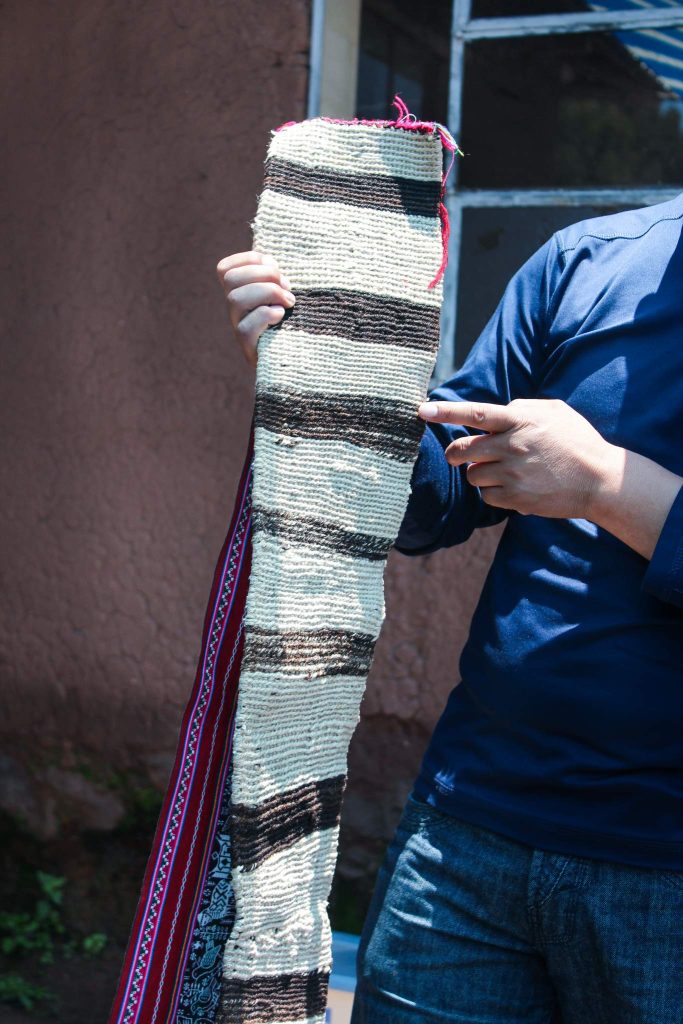
Taquile island : the battle with outsiders
Taquile will immediately remind you of the Mediterranean , turquoise waters , endless azure sky and lush green landscapes ; stark hills and steep geometric terraces.
It feel completely untouched and it remains renowned for its “community” tourism .
Tourism in Peru started booming in 1970s . Taquilens created a very interesting system with cooperative and communal distribution of benefits
They quickly established the monopoly on transportation to and from the Puno docks – the boats that brought tourists a billeting system offering overnight stays in Taquilean homes .The outsider tour companies realized how much money they were losing and tried to buy out the Taquile island.
The government abolished the law allowing the islanders to have the monopoly in local tourism in the 90s. and today all tourism is controlled by outside operators…
The weavers set up a community ran store , a co-op to which every able islander contributes, as well as a community ran museum to display their older , better textiles ..
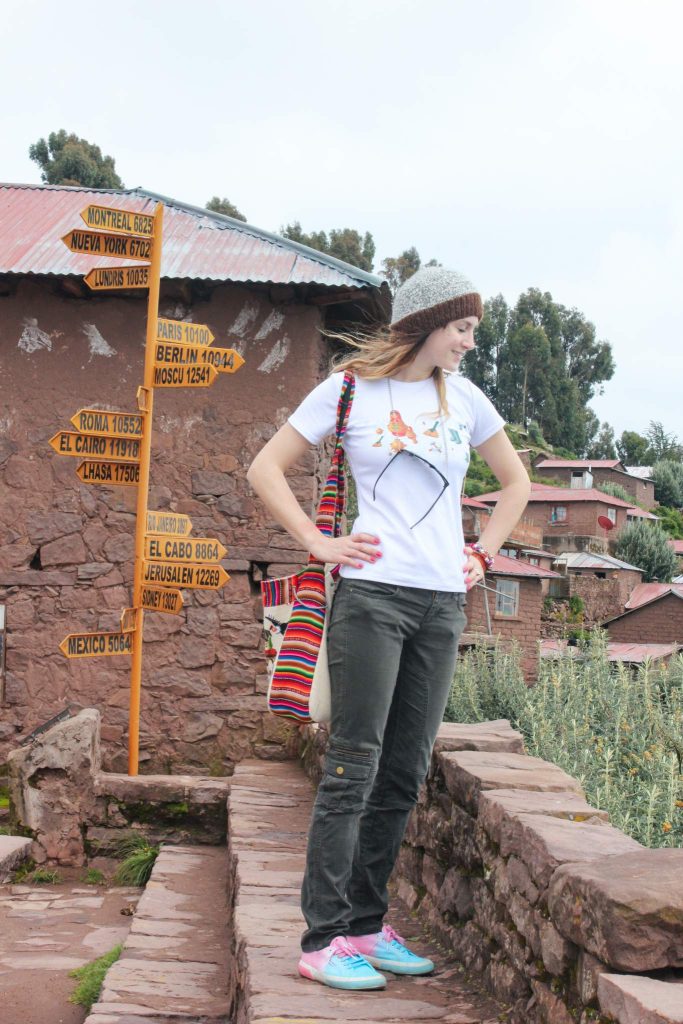

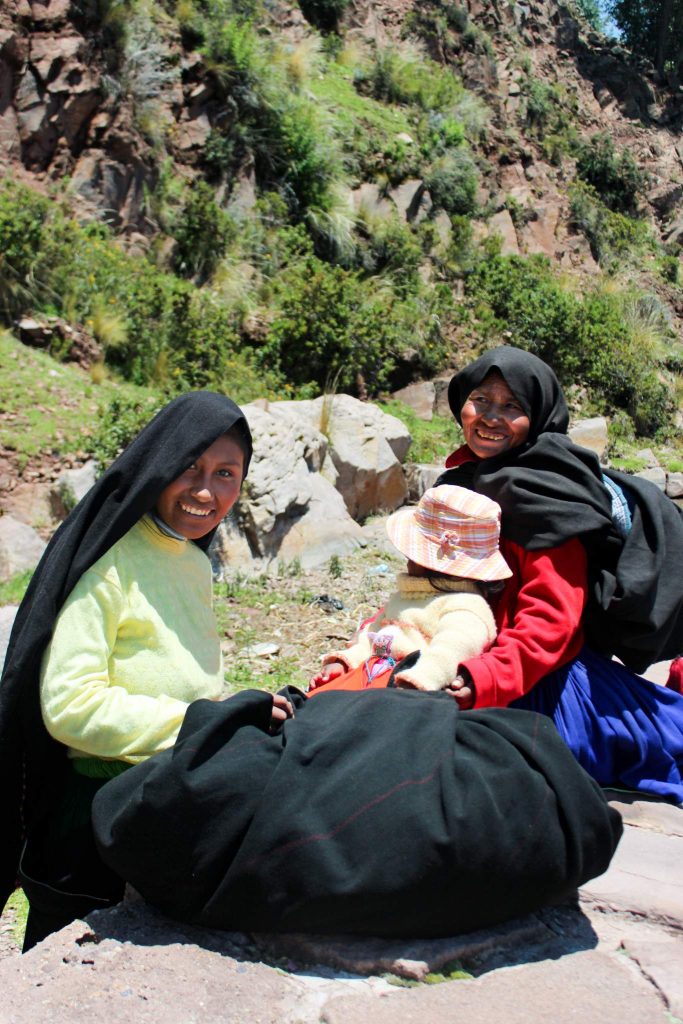
All around Peru you will find the locals wearing traditional clothing , and the do in fact wear it not only to charge tourists per photo . You can also meet plenty of modern Peruvians wearing western clothes . In Taquile island , it is obligatory for the islanders still wear handwoven textiles on a daily basis to wear traditional clothing ( I assume being UNESCO’s Intangible Heritage of Humanity , that’s the rule )
Taquile’s traditional male outfit: sandals, black trousers, ruffled-sleeved white shirt, short black-and-white vest, pin-striped white chumpe (a woolen wrap pinned around the waist like a cummerbund) and red-and-white woolen hat, worn above the ears and flopped to one side during the midday heat.
But the belt, which is called a chumpi, or faja in Spanish, is a vestige from before the conquest, and it is only made by females .
Much of the traditional clothing is based on colonial Spanish dress. Men’s outfits resemble a matador’s, while women’s shawls share similarities with Andalusian mantillas
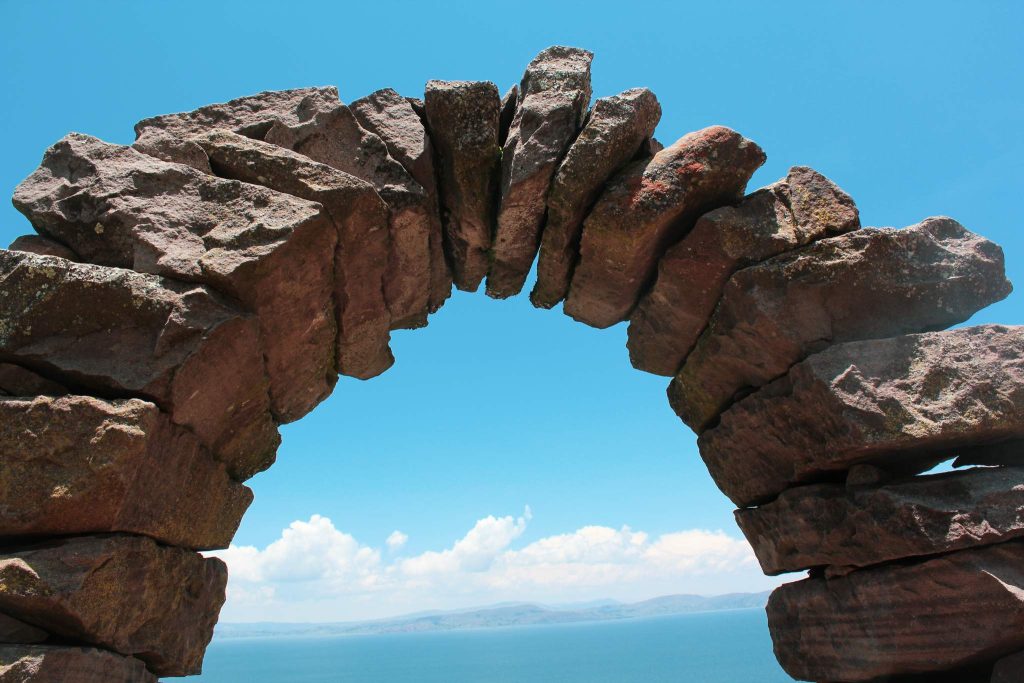
How to get to Taquile Island :
Boats to Taquile leave from the nearby lakeside town of Puno (45 minutes from the airport) at around 8:30 every morning. You may want to plan additional time to adjust to the high altitude before heading to the island
At the port in Puno, the boat run by a Taquileño collective is usually anchored on the right side of the dock about halfway down. Look for passengers wearing traditional dress and traveling with bundles of supplies. The ride takes 2 -3 hours and costs 20 soles (about $6, at 3.53 soles to the dollar) each way.
When to Visit Taquile Island :
The Altiplano has only two seasons: dry and rainy. The highlands are generally extremely sunny and dry from early June through mid-September, the peak season for travel to the lake. Steady rains begin in January and die out by April. During October, November and December, there are fewer tourists, but the weather is still good for travel. At night the highlands can be bitingly cold, especially during the dry season, when the sun’s heat vanishes with the sunset.
Altitude Sickness
Altitude sickness can be a problem in the Altiplano, over 12,000 feet above sea level. The first few days in the highlands, get plenty of rest, drink lots of fluids and avoid alcoholic beverages. Ask your doctor about prescription medicine that combats the effects of altitude sickness
How to Get To Puno ?
The best and cheapest way to get to Lake Titicaca is from Cusco. You can reach the lake through the following modes:
By Peru Rail
It is by far the most spectacular way to reach Lake Titicaca. Peru Rail operates between the Puno and Cusco four days a week. It will take you 10 hours and 30 minutes to reach the lake on the rail, and the cost is 180$.
By Plane
Traveling by plane won’t show you many views, but it will probably take you to the lake in the shortest time possible; 1 hour. You have to take the flight from Juliaca. The cost per person is roughly 200$.
By Bus
This option is not only the cheapest but also lets you enjoy the views at a number of stopovers. Enjoy this scenic 7-hour drive from Cusco to Lake Titicaca in only $15-$50.
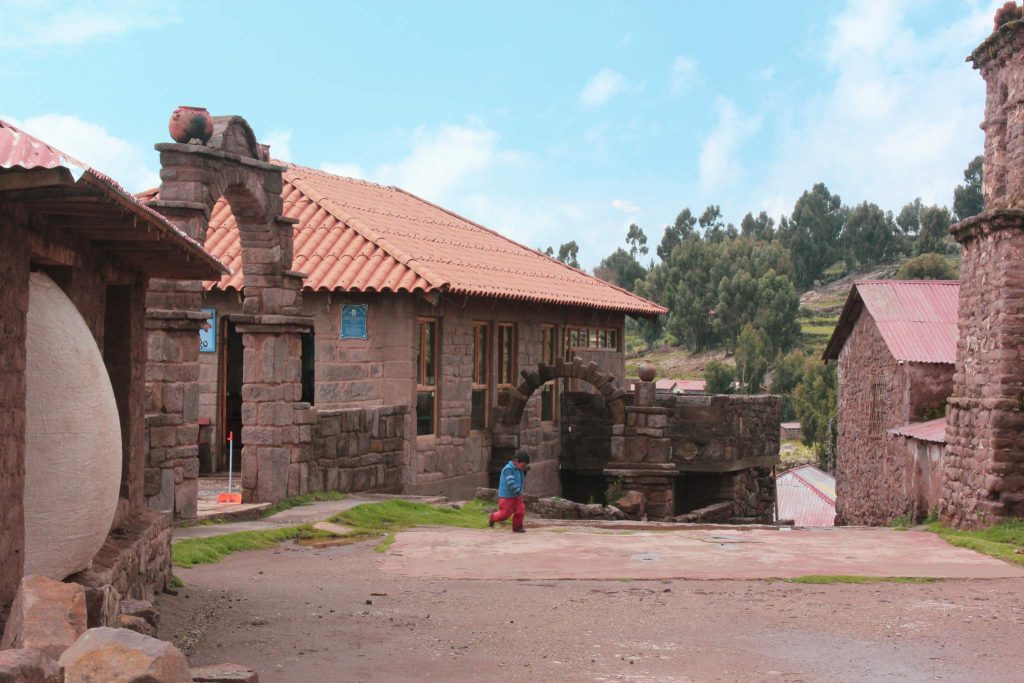
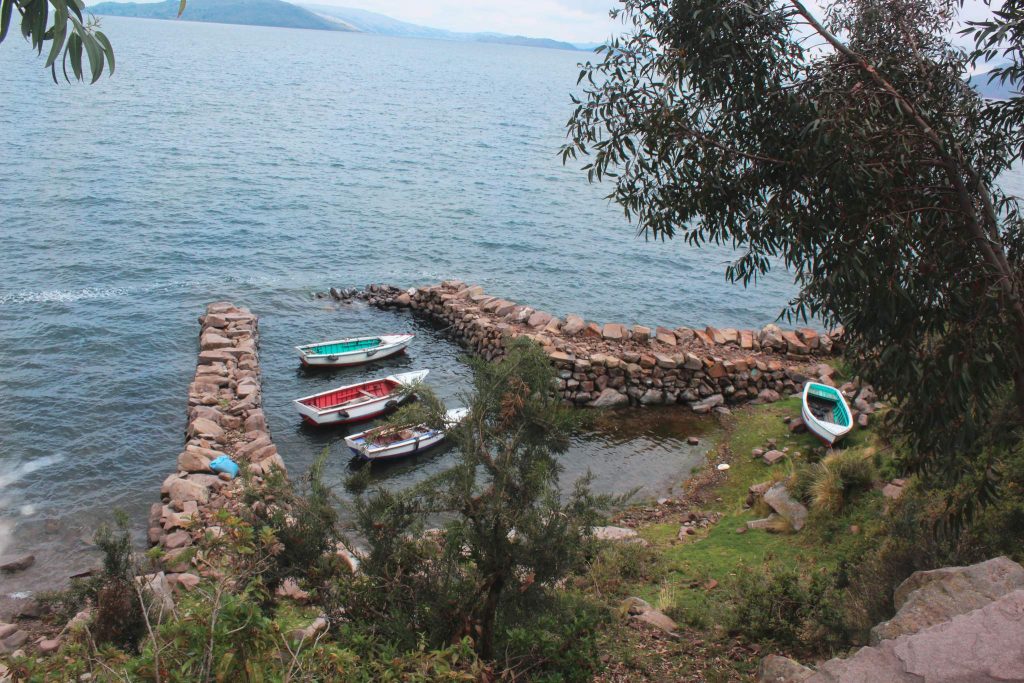

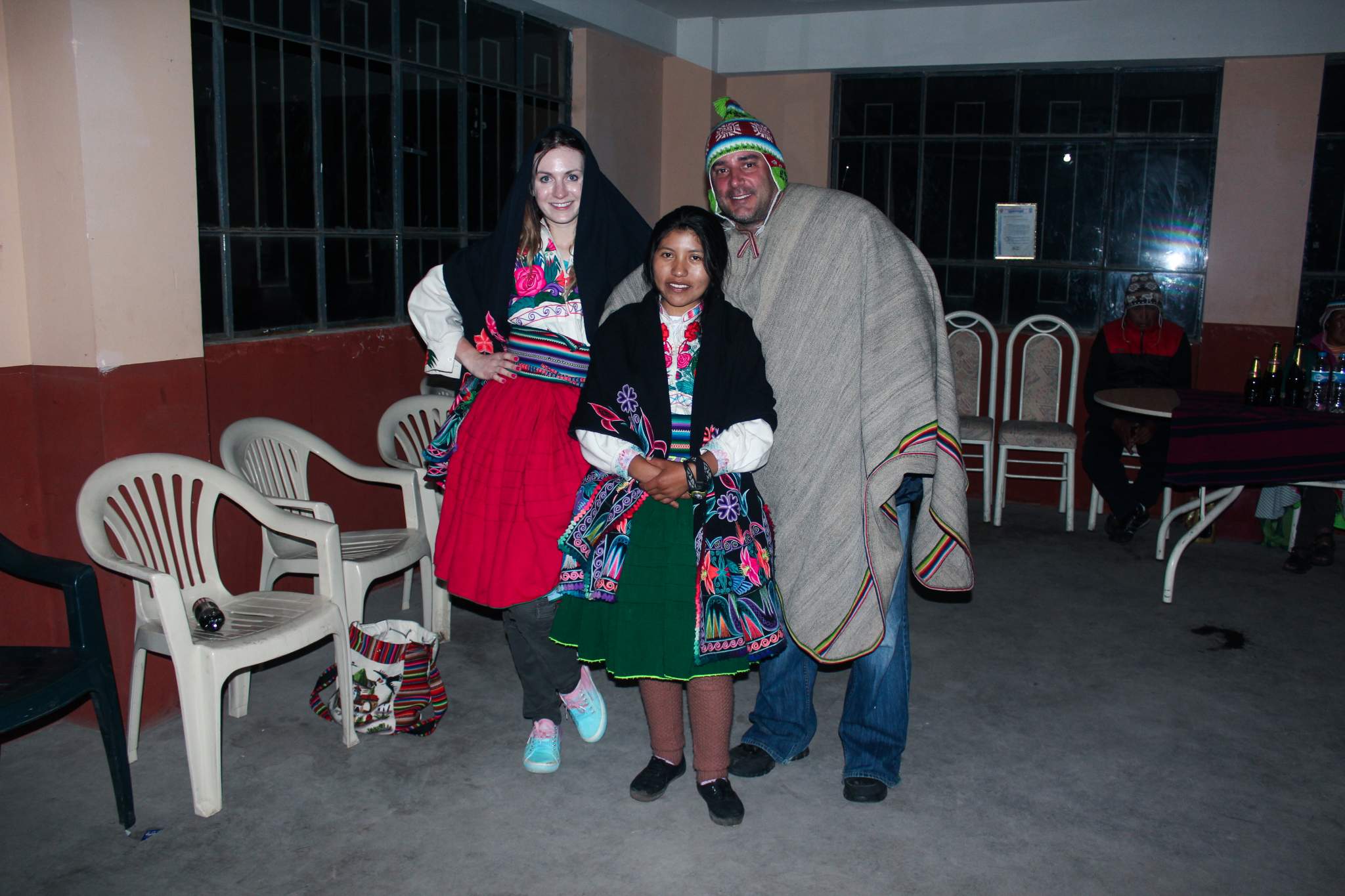
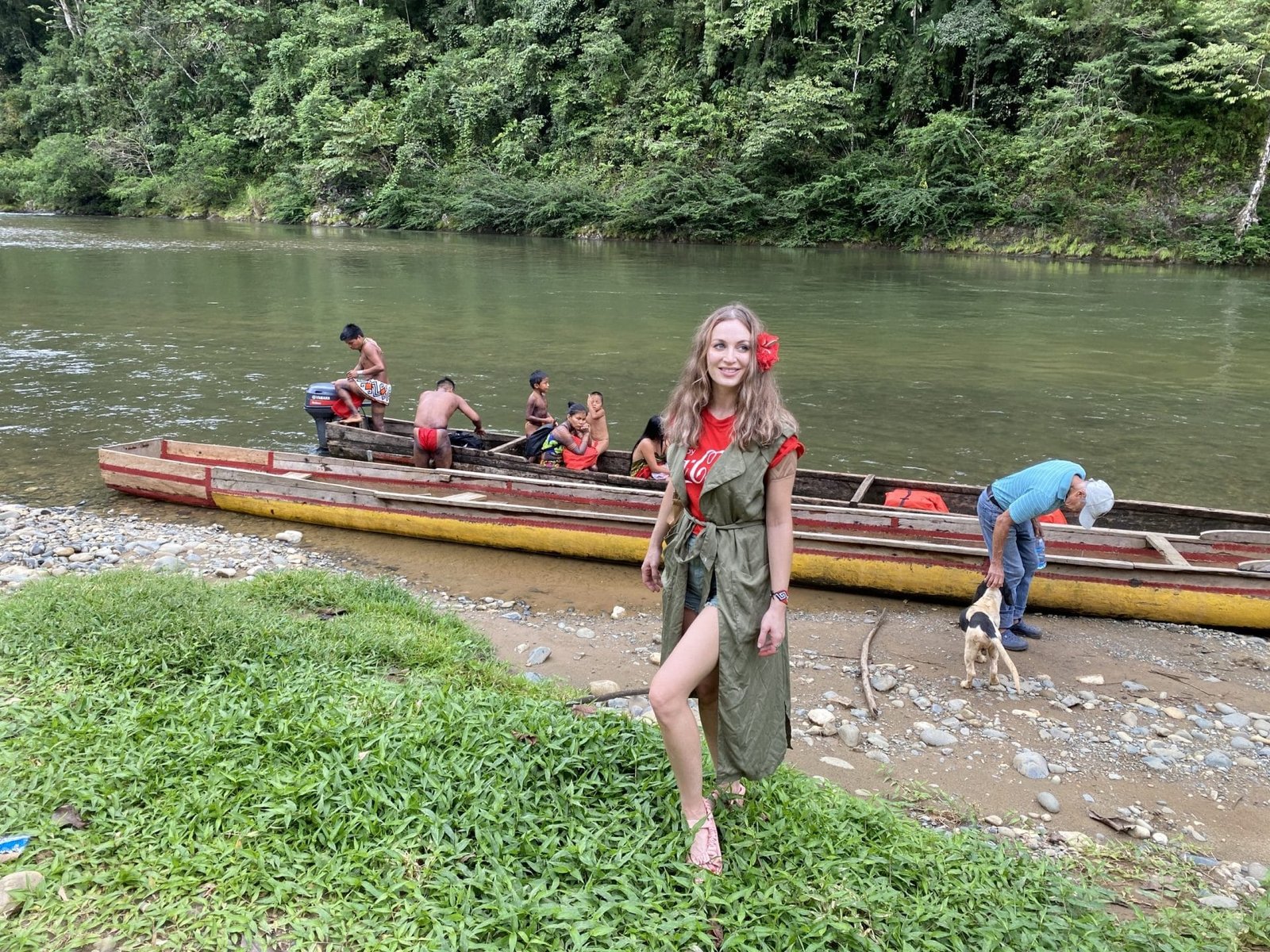
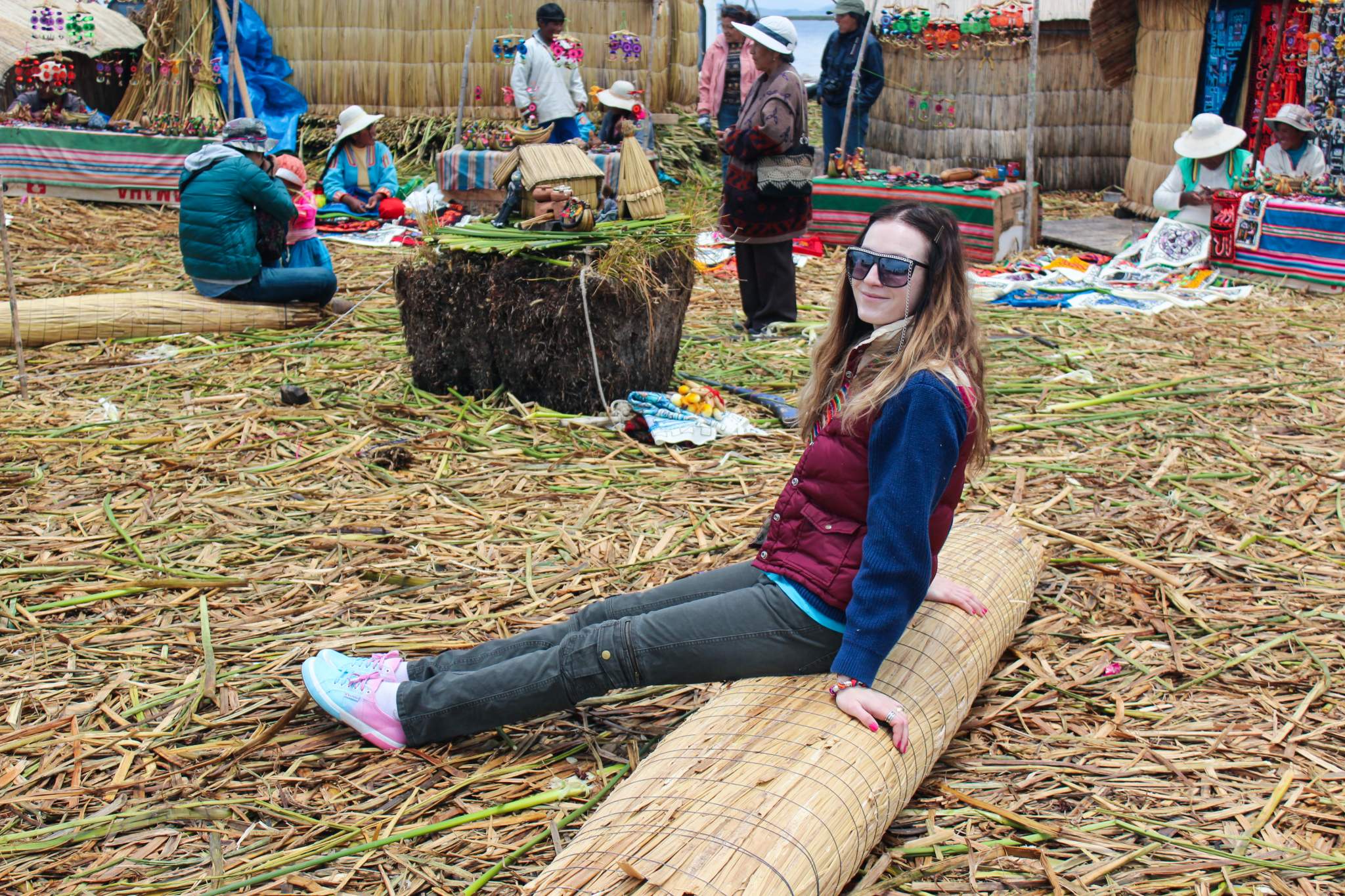
Pingback: Amantani Island Homestay : My Actual Experience